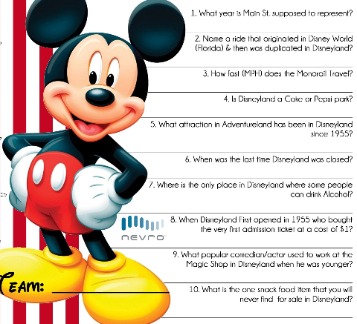Future research should focus on executing pragmatic trials investigating the effects of lowering alcohol consumption in a daily clinical practice or on evaluating the impact of certain alcohol consumption regulating policy measures. Even though each of these designs have their own strengths and limitations, combined they can result in a careful triangulation of the evidence. Dr. Cho also warns that if you have liver dysfunction or take other medicines that are processed through the liver, your risks might be different. Talk to your healthcare provider about how alcohol might interact with your prescription medicines. But it may be worthwhile learning about what counts as binge drinking and whether or not you may be drinking too much and don’t even know it. And if you have a history of high blood pressure, it’s best to avoid alcohol completely or drink only occasionally, and in moderation.
Potential Biologic Mechanisms Underlying Alcohol-Induced BP Effects
“Excessive alcohol consumption can cause nerve damage and irreversible forms of dementia,” Dr. Sengupta warns. The morning after a night of over-imbibing can cause some temporary effects on your alcoholism and anger management brain. Things like trouble concentration, slow reflexes and sensitivity to bright lights and loud sounds are standard signs of a hangover, and evidence of alcohol’s effects on your brain.
Raises blood pressure
Evidence of oxidative stress is found after short periods of alcohol consumption (2 to 18 weeks), at least in animal models. These data suggest that antioxidant defense mechanisms that attempt to protect the heart against oxidative damage appear to be initiated ketamine addiction: definition symptoms effects and treatment soon after drinking alcohol. Also, as noted below, data from other studies demonstrate the protective role of administered antioxidants, such as a synthetic compound that mimics the native superoxide dismutase enzyme, called a superoxide dismutase mimetic.
Vector-Borne Diseases Rise Sharply In Monsoon, Expert Insights On Safety Measures
Many researchers have found that alcohol intake increases HDL cholesterol (HDL-c) levels, HDL (“good cholesterol”) particle concentration, apolipoprotein A-I, and HDL-c subfractions (Gardner et al. 2000; Muth et al. 2010; Vu et al. 2016). Findings have been equivocal for other lipids, such as low-density lipoprotein cholesterol (LDL-c) (the estimated amount of cholesterol within LDL particles, or “bad cholesterol”) and triglyceride levels mental health and substance abuse health coverage options (Rimm et al. 1999; Volcik et al. 2008; Waskiewicz and Sygnowska 2013). High triglyceride levels in the blood stream have been linked to atherosclerosis and, by extension, increased risk of CHD and stroke. However, in a recently conducted Mendelian randomization study, Vu and colleagues (2016) reported that low-to-moderate alcohol consumption reduced triglyceride and LDL-c and increased HDL-c, in particular the HDL2-c subfraction.
According to the 2019 National Survey on Drug Use and Health from the Substance Abuse and Mental Health Services Administration, 69.5% of people in the United States reported drinking within the last year. 25.8% of people classified their recent consumption habits as binge drinking (excessive drinking in a defined amount of time). Cholesterol levels are affected by many factors, including body weight and dietary intake. Alcohol intake may also affect cholesterol levels, both positively and negatively (1, 2). Even drinking a little too much (binge drinking) on occasion can set off a chain reaction that affects your well-being. Lowered inhibitions can lead to poor choices with lasting repercussions — like the end of a relationship, an accident or legal woes.
Harvard-led study IDs statin that may block pathway to some cancers
In addition, alcohol may attenuate ischemia−reperfusion injury by activating protein kinase C epsilon (PKCε) (Walker et al. 2013). Activation of PKCε may protect the myocardium against ischemia−reperfusion injury by stimulating the opening of mitochondrial ATP-sensitive potassium channels. This in turn prevents the opening of the mitochondrial permeability transition pore (Walker et al. 2013). While drinking can be a socially acceptable part of our lives, the warm weather and activities of summer may have you reaching for a glass of wine or mixed beverage more frequently than before.
This is particularly true with excessive drinking behaviors, such as binge and heavy drinking. Per numerous studies, approximately 50% of all deaths among working-aged men were due to alcohol. In response, policy reforms were introduced to reduce alcohol consumption in Russia. These reforms included stricter penalties for drinking and driving, increases in excise taxes, setting minimum prices for some alcoholic products, restrictions on advertising, and restriction on alcohol availability. Strict alcohol control policies led to a significant reduction in alcohol-attributable morbidity and mortality. Between 2003 and 2016, alcohol consumption fell by 43%, alcohol dependence dropped, and a marked difference was observed in social impacts of alcohol (including suicide, homicide, and motor vehicle accidents) as well.
Based on systematic reviews and meta-analyses, the evidence seems to indicate non-linear relationships with many CVDs. Large-scale longitudinal epidemiological studies with multiple detailed exposure and outcome measurements, and the extensive assessment of genetic and confounding variables, are necessary to elucidate these associations further. Conflicting associations depending on the exposure measurement and CVD outcome are hard to reconcile, and make clinical and public health recommendations difficult. Furthermore, the impact of alcohol on other health outcomes needs to be taken into account. A lower risk of coronary heart disease and myocardial infarction among moderate drinkers compared to abstainers has been consistently observed in epidemiological studies and meta-analyses of these studies.
Women are less likely to consume alcohol than men; however, the use of alcohol may have more implications for women than men with respect to physical illnesses and more severe cognitive and motor impairment with a much lower alcohol exposure as compared to men [10]. Alcohol was targeted in the Sustainable Development Goals (SDGs) under SDG 3.5, which calls on countries to ‘strengthen prevention and treatment of substance abuse, including narcotic drug abuse and harmful use of alcohol’ [3]. This inclusion highlighted the role of alcohol as a development obstacle and its close association with many other SDGs and their targets. Alcohol adversely effects 14 out of 17 SDGs and 54 of the targets that make up the 2030 agenda [4].
As the severity of the damage increases, it increases a person’s risk of heart attack, heart disease, and heart failure. Many studies suggest a strong link between high alcohol intake, or binge drinking, and high blood pressure and thickening of the heart muscle. The prevalence of cardiovascular disease (CVD) has nearly doubled in the last two decades, with more than 500 million cases being reported in 2019 alone [1]. More than 18.5 million individuals have died of CVD, making it the leading cause of global mortality and disability. Preventable behavioural risk factors play a major role in incidence of CVD, including unhealthy diet, tobacco use, alcohol consumption, and low physical activity.
Lower oxygen levels cause people to wake up more frequently and experience periods of breathing punctuated by periods of apnea, a phenomenon called periodic breathing. Alcohol is a psychoactive and harmful substance that has become a common accompaniment of social events in many parts of the world. In addition to being commonly interspersed with the social lifestyles of individuals, the use of alcohol exhibits a socio-economic inequity. Individuals with low socio-economic status experience a disproportionately greater alcohol-attributable harm than individuals with high socio-economic status from similar or lower amounts of alcohol consumption [2].
Since RCTs require strict inclusion and exclusion criteria, the results are by definition definitively applicable only to a selected part of the population. Because alcoholic beverages are widely consumed worldwide, the danger is that results of an RCT executed in a specific population could be wrongfully be applied to excluded individuals in whom the results would have differed [65]. Furthermore, several potentially adverse but rare outcomes, such as the risk of developing specific types of cancer, are impossible to investigate in an RCT due to the unrealistically large sample sizes needed. To date, all attempts to execute a large-scale RCT with sufficient follow-up time have stranded and currently no large RCTs are running to our knowledge.
The associations between drinking and CV diseases such as hypertension, coronary heart disease, stroke, peripheral arterial disease, and cardiomyopathy have been studied extensively and are outlined in this review. Although many behavioral, genetic, and biologic variants influence the interconnection between alcohol use and CV disease, dose and pattern of alcohol consumption seem to modulate this most. Low-to-moderate alcohol use may mitigate certain mechanisms such as risk and hemostatic factors affecting atherosclerosis and inflammation, pathophysiologic processes integral to most CV disease. Both the negative and positive effects of alcohol use on particular CV conditions are presented here. The review concludes by suggesting several promising avenues for future research related to alcohol use and CV disease. The associations between drinking and CV diseases such as hypertension, coronary heart disease, stroke, peripheral arterial disease, and cardiomyopathy have been studied extensively and are outlined in this review.
For example, it seems that the higher the education level, the lower the presence of excessive drinking [12]. Long-term heavy alcohol consumption induces adverse histological, cellular, and structural changes within the myocardium. These mechanisms contribute to the myocyte cellular changes that lead to intrinsic cell dysfunction, such as sarcoplasmic reticular dysfunction and changes in intracellular calcium handling and myocyte loss. However, modulatory influences related to drinking patterns, genetic susceptibility, nutritional factors, ethnicity, and gender also many play a role (Piano and Phillips 2014) (figure 4).
Moderate alcohol consumption has also shown to reduce low-density lipoprotein cholesterol, fibrinogen levels, Interleukin-6, HbA1c and fasting insulin concentrations in various studies [59•, 61]. No effects were observed on C-reactive protein or total cholesterol [59•, 61]. Altogether, these studies provide plausible underlying mechanisms not only for the observed risk reduction of myocardial infarction with moderate alcohol consumption, but also for increased risks of other cardiovascular outcomes such as heart failure or stroke.
- Low-to-moderate alcohol use may mitigate certain mechanisms such as risk and hemostatic factors affecting atherosclerosis and inflammation, pathophysiologic processes integral to most CV disease.
- Despite the plausibility of this evidence, the duration of most RCTs has been 4 to 8 weeks, and effects over longer time periods on hard outcomes are therefore uncertain.
- Understanding how alcohol affects the mind, body, and overall health can help you make the most informed decisions about your consumption habits.
- New research found that alcohol compounds the effects of high altitude on people’s bodies, putting an extra burden on the cardiovascular system, reducing blood oxygen levels, compounding dehydration, and impairing sleep quality.
- But there’s plenty of research to back up the notion that alcohol does lead to weight gain in general.
- If that casual inflight drink isn’t something you’re quick to forgo, experts offer some tips to minimize sleep and health impacts.
This article explains how alcohol intake affects cholesterol levels and heart health. On the contrary, a prospective randomized trial evaluated the effect of 90 days of moderate RW intake (150 mL/day for women, 300 mL/day for men) in 44 healthy subjects. They described no changes in either HDL-C or TG levels during the trial, yet LDL-C levels were lowered in the RW group (−0.3 mmol/L; 95%CI −0.6–−0.04).
This article explains how dehydration contributes to hypertension and how drinking water can help maintain or even lower your blood pressure. It also describes the other lifestyle measures that should also be part of your treatment plan if you have high blood pressure. Alcohol consumption may cause the release of happy hormones like endorphins and dopamine for a short time, but it may leave you feel agitated, depressed and anxious.
Alcohol has been ascribed as a crucial factor in deaths due to infectious diseases, intentional and unintentional injuries, digestive diseases and several non-communicable diseases (NCD) [7]. Alcohol use can exacerbate mental health conditions, like anxiety and depression, or lead to their onset. And prolonged alcohol use can lead to mental health conditions like anxiety and depression. That’s because your body already has processes in place that allow it to store excess proteins, carbohydrates and fats.
Health experts may also advise individuals with cardiovascular disease or other chronic conditions to avoid alcohol if possible. Newer research indicates that drinking alcohol, even within the recommended limits, could increase the risk of several types of cancer and even cardiovascular disease. This is why the Dietary Guidelines for Americans suggests that adults who do not drink alcohol should avoid starting, if possible. Researchers at Mayo Clinic recently published a study looking into the risks of consuming energy drinks by people with genetic heart diseases. Though studies are lacking as to how much dehydration impacts hypertension, animal studies conducted by Monash University reported that chronic dehydration not only worsens high blood pressure in mice but also increases the risk of severe kidney damage.




